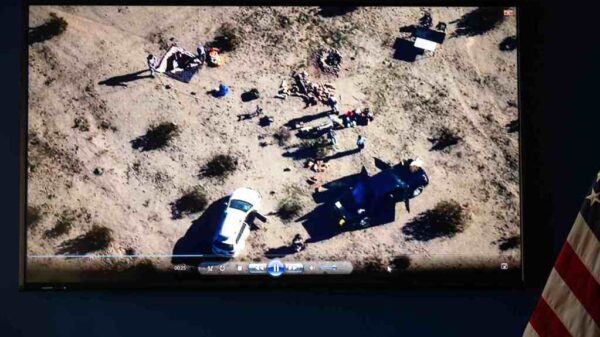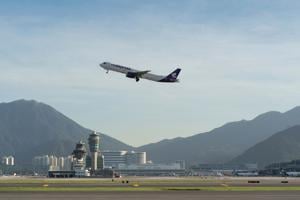A cargo aircraft skidded off the runway at Hong Kong International Airport and plunged into the sea early on March 11, 2024, resulting in the deaths of two security workers in a patrol car. The incident occurred around 03:50 local time as the Boeing 747 operated by Turkey-based ACT Airlines was landing after a flight from Dubai, United Arab Emirates. Fortunately, the four crew members aboard the aircraft escaped without injuries.
According to Steven Yiu, the executive director of airport operations for the Hong Kong Airport Authority, the plane was taxiing when it veered off the runway to the left, colliding with the security vehicle. Yiu clarified during a press conference that the patrol car was not on the runway when the accident occurred. “The patrol car absolutely did not rush onto the runway. It was the plane that went off the runway and crashed into the patrol car outside the fence,” he stated.
Rescue crews arrived at the scene shortly after the crash, discovering the aircraft split into two parts and floating in the water. The four crew members were found waiting at the open door of the plane. Tong Sze-ho, acting senior assistant chief ambulance officer, confirmed there were no injuries among the crew. Tragically, the two security workers were located after a 40-minute search.
Local television footage displayed the aircraft partially submerged off the airport’s sea wall. The front half and cockpit remained above water, but the tail section appeared to have broken off. The incident took place on the north runway of one of Asia’s busiest airports, which subsequently remained closed for investigations, though the other two runways continued to operate without disruption. Yiu assured the public that overall flight operations at the airport would not be affected.
Investigators from the Air Accident Investigation Authority have classified the incident as an accident and are examining various factors, including the aircraft’s systems, operations, and maintenance records. They are also seeking the cockpit voice recorder and flight data recorder as part of the investigation.
Emirates, which wet-leased the Boeing 747 freighter designated as EK9788, confirmed that there was no cargo on board at the time of the accident. In a wet lease arrangement, the leasing company provides not just the aircraft but also the crew, maintenance, and insurance. The aircraft involved is reported to be 32 years old, according to data from Flightradar24.
Hong Kong International Airport was constructed on reclaimed land and features runways in close proximity to the sea. The north runway, where the incident occurred, is only a few hundred meters from the water, while the other runways are even closer. Emirates, widely recognized for its passenger services from Dubai International Airport, also operates a significant cargo business from Al Maktoum International Airport, where they plan to invest $35 billion in improvements over the next decade.
Despite this tragic accident, Emirates noted in its recent annual report that it had expanded its capacity by adding two wet-leased Boeing 747s to meet increasing customer demand. The airline operates a fleet of around 260 aircraft, primarily consisting of Boeing 777s and Airbus A380s.
As the investigation continues, authorities are focused on understanding the causes behind this unfortunate incident and ensuring the safety of operations at one of the world’s major aviation hubs.







































































